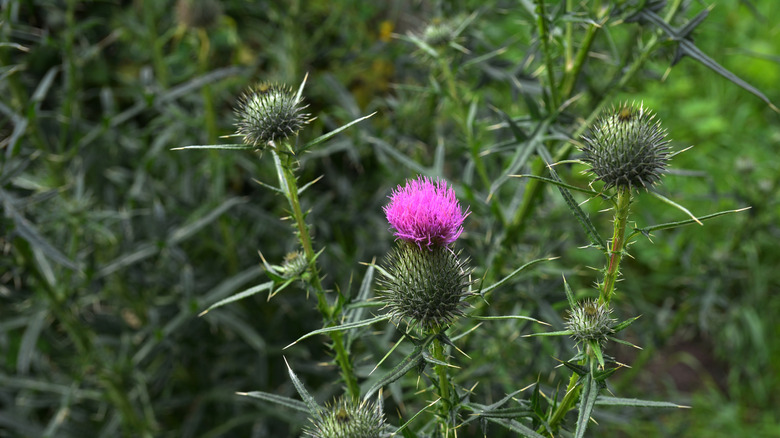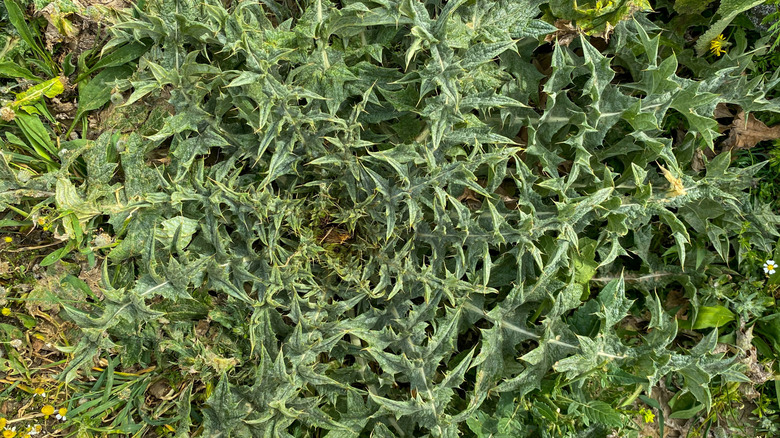Why You Need To Act Fast If The Invasive Bull Thistle Pops Up In Your Yard
Thistles have a strange beauty, and the native species of these tough, purple-flowered plants feed pollinators and other forms of wildlife. But don't treat bull thistle (Cirsium vulgare) as a flower — it's a deceiving invasive weed you don't want spreading in your yard. Bull thistle is classified as invasive in many states, including Washington, Oregon, Arizona, Maryland, and Pennsylvania, because it's a threat to native plants and wildlife. You need to act fast and remove bull thistle from your yard to prevent it from crowding out native species and disrupting the local ecosystem. You can do this by pulling the plants, or applying herbicide in some cases, and then re-seeding the area with native plants.
If you don't take action to eradicate bull thistle, its many small, long-lived seeds will be spread by the wind or carried along by animals, which means they can take root elsewhere and disturb native vegetation. Not only do these plants invade forests and pastures, but they can negatively impact agriculture, since livestock don't tend to graze on them. Once bull thistle establishes itself in disturbed soil, the thistle forms thickets that can upset native plant populations for years at a time.
How to recognize and remove bull thistle
Before you take steps to get it out of your yard, make sure you're dealing with invasive bull thistle and not a native plant hummingbirds love. One way to tell if the thistle is invasive is to look for spines coating the entire stem. Bull thistles have these characteristic spiny stems, as well as narrow leaves and vase-shaped pink or purple blooms.
Bull thistle doesn't produce flowers right away, so it's possible to act before it's able to put out seeds. As a biennial, in its first year of growth, it will form a rosette before blooming the next year. Look for a round cluster of leaves. The upper leaves feel like sandpaper, while the leaves below them could have a white appearance from hairs growing in different directions. In its second year, either a lone flower or a cluster of flowers blooms from a stem.
The good news is that it's easier to get bull thistle under control than other thistles. The young plants can be pulled by hand or uprooted with garden tools if you notice them early, before they reach the flowering stage. When you pull stubborn thistle weeds by hand, make sure to cut the root beneath the soil and remove all the leaves. If you go the herbicide route, apply it in the fall when you see the bull thistle's rosettes so it won't sprout the following year.

